
A living masterpiece of color, the Purple-Rumped Sunbird (Leptocoma zeylonica) graces the natural world with an electric symphony of greens, lemon-yellows, and whites, all crowned by its signature metallic purple accent.
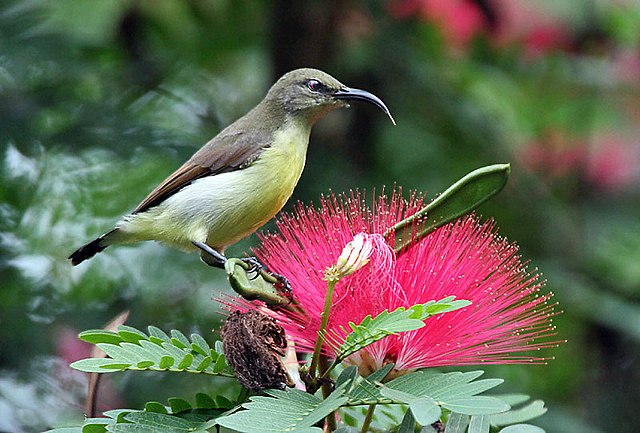
Measuring less than 4 inches (10 cm) in length, this diminutive avian marvel boasts a distinctive down-curved bill and brush-tipped tongue, perfectly adapted for sipping nectar from flowers. A species exhibiting sexual dimorphism, the male of the species is adorned in hues of dark maroon on its upper plumage, while its crown gleams with a captivating blue-green luster. The throat and rump are elegantly swathed in glossy, vivid purple, creating a truly eye-catching spectacle. A maroon chest band accentuates the sides of its head and back, while bright green shoulder patches add an extra touch of flair. The underparts of the male are adorned in cheerful yellow, complemented by white flanks.
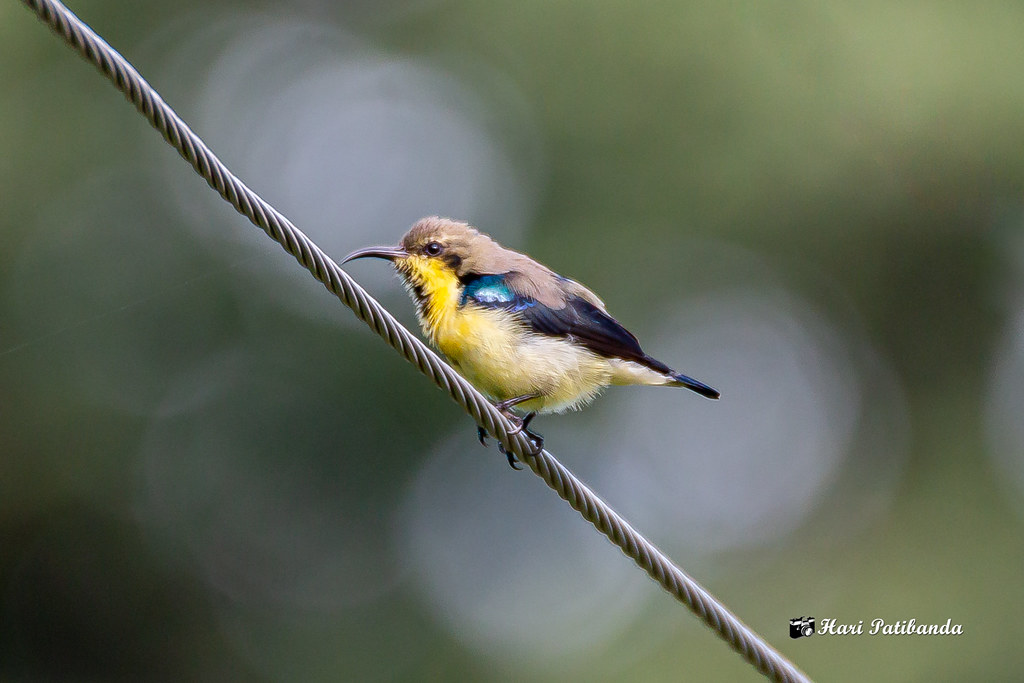
In contrast, the female Purple-Rumped Sunbird exudes a more understated elegance. She dons an olive-green back, brown wings, a white throat, and a chest adorned in shades of yellowish-brown.
These birds can be found in a variety of habitats featuring trees, including scrublands and cultivated areas. However, they typically avoid dense forests.
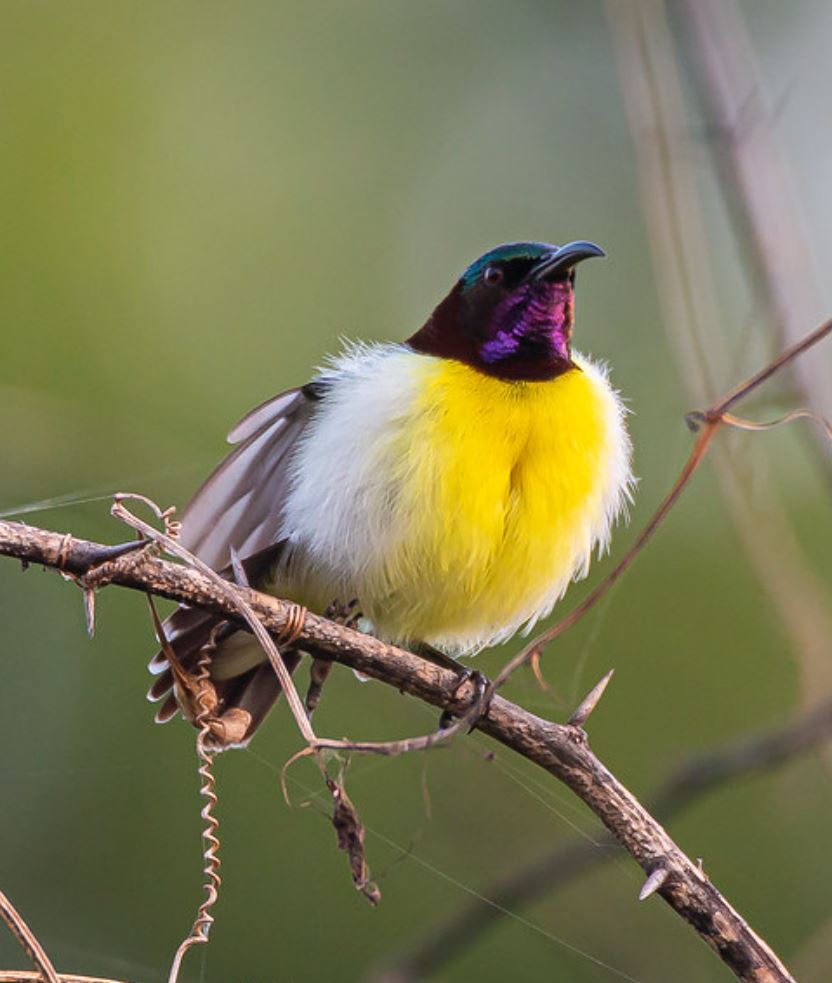
When it comes to sustenance, Purple-Rumped Sunbirds are primarily nectar-feeders. They often hover in front of flowers, similar to hummingbirds, though they are more likely to perch while feeding. Additionally, they incorporate insects into their diet and may also partake in honeydew exuded by leafhoppers.
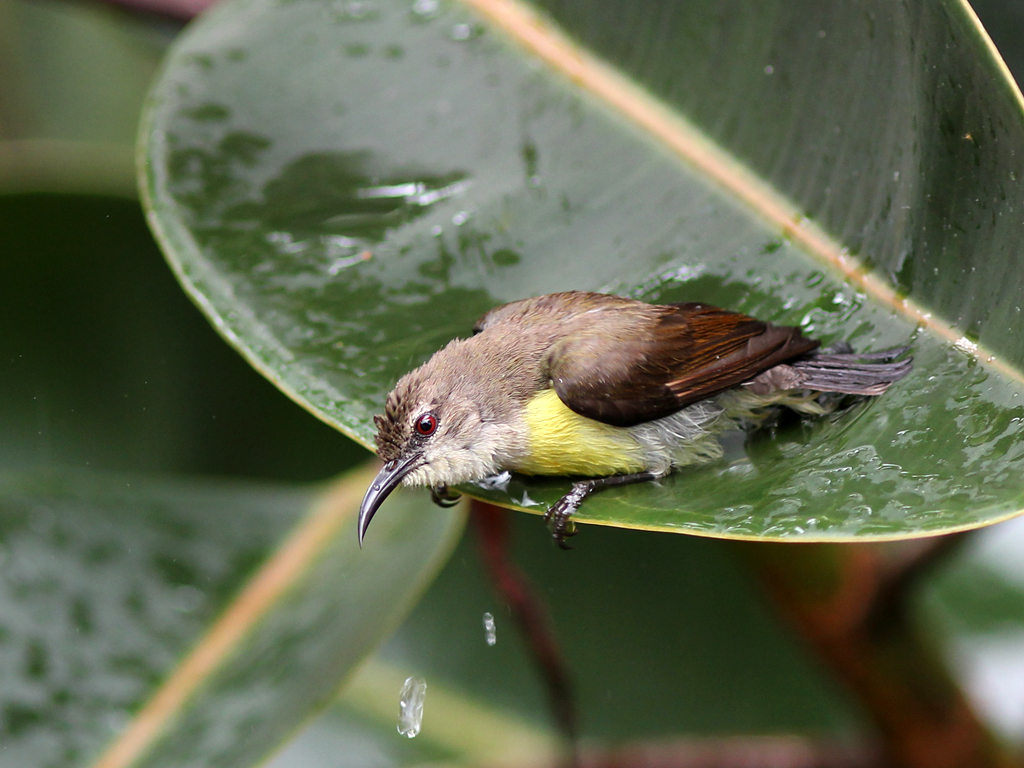
These sunbirds are capable of breeding year-round, with heightened breeding activity often occurring during the monsoon season. During this period, the female skillfully weaves her nest using plant fibers and cobwebs. The nest’s interior is lined with soft fibers, and it’s usually situated at the end of a branch. An average of two oval-shaped eggs, featuring a delicate green and white pattern flecked with spots and streaks, are laid within. Both parents engage in incubating the eggs for a period of 14 to 16 days, with the assistance of other females and offspring from previous seasons.
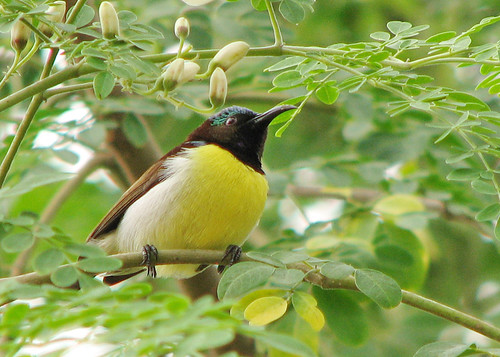
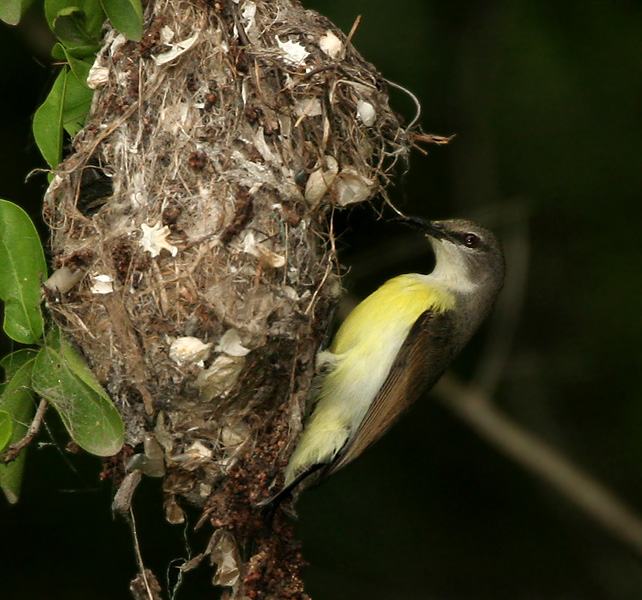
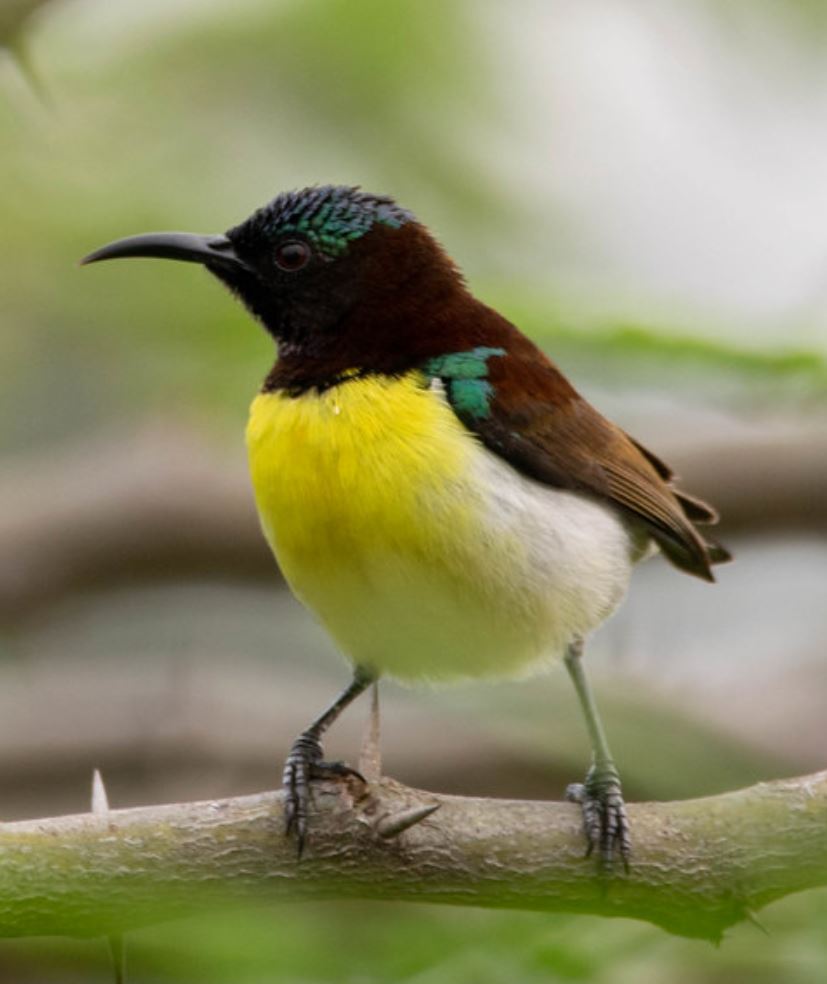

In the canvas of nature, the Purple-Rumped Sunbird stands as a testament to the intricate artistry that defines the world’s fauna. Its vivid colors, specialized adaptations, and unique behaviors offer a glimpse into the boundless creativity that Mother Nature employs in crafting her creations. As we marvel at the beauty of these avian wonders, let us also appreciate the delicate balance and harmonious rhythms that weave together to form the captivating tapestry of life on Earth.



